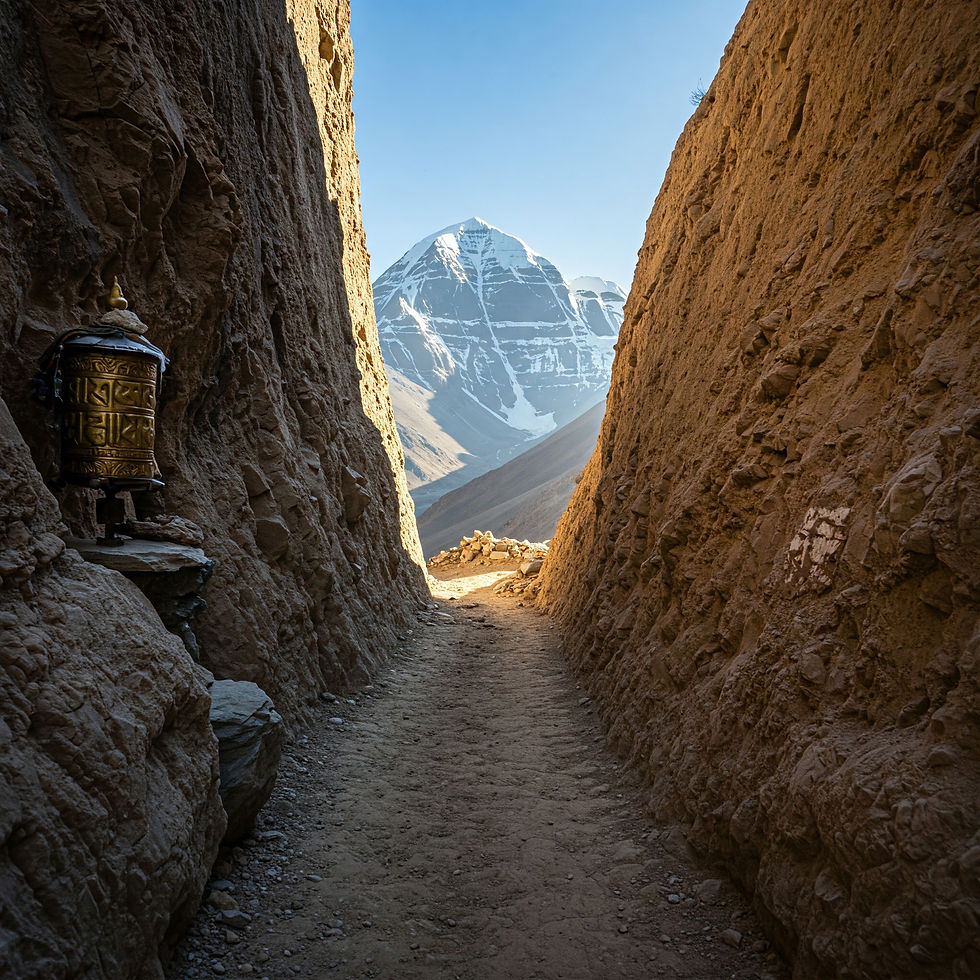1000s of Bells, One Silent Prayer — why is Golu Devta Temple famous
- Glacier Gazette

- Apr 11
- 3 min read
It’s hard to forget the first time you hear the wind pass through thousands of brass bells, all clinking in a soft, endless chorus. You don’t just hear them—you feel them in your bones. That’s when you realise: this place listens. Really listens.
There are no loud chants. No glittering marble idols. Just the echo of hopes tied to paper, hanging beside bells that carry someone’s silent, desperate prayer.
So, why is Golu Devta Temple famous? The answer goes far beyond folklore—it's about the invisible bond between people and justice. Between belief and voice. Between silence and answered prayers.
In this article, you will learn:
🛕 The real story that made Golu Devta a "God of justice" in Uttarakhand
✉️ Why devotees write letters to him—sometimes in blood
🔔 The spiritual and emotional significance of the 1000s of bells
🧓 A local voice sharing what Golu Devta means to their life

Golu devta temple bell
The Boy Who Asked for Justice—and Became God
Locals believe Golu Devta wasn’t born a god. He was once General Golju, a prince of the Katyuri dynasty in Kumaon—known for being brave, fair, and deeply loved by his people. But jealousy runs like wildfire through royal courts. Falsely accused and executed, his loyal horse carried his head to the king, proving his innocence after death.
It’s said that Golu Devta’s spirit didn’t seek revenge. He asked only for justice.
This moment—of truth standing tall even in death—sparked his divine journey. The people began to worship him not out of fear, but trust.
Over the years, he became a symbol of unwavering justice, especially in Kumaon’s temples of truth like Chitai and Gairar Golu Devta Dham.
"He Listens More Than Any Court": A Local’s Voice
On my last visit to Almora, I met Puran da, a 68-year-old tea seller just outside the temple gate. He poured me a kullhad of chai and nodded at the hanging bells.
“These are our petitions. But unlike court files, they don’t gather dust. He listens. He answers. That’s why people return—not with prayers, but thank-yous.”
Behind him, a man quietly tied another letter to the temple wall.
Not a single word was spoken, but you could feel the weight of what wasn’t said.
Why Letters? And Why Bells?
The letters, known as “Arji” in the local dialect, are emotional appeals—sometimes written on court stamp papers, sometimes on torn notebook pages. Some are confessions. Others, desperate cries for help. And yes, a few are written in blood.
Once the wish is fulfilled, devotees return to tie a bell as a gesture of gratitude.
It’s not superstition—it’s a system of faithful documentation. A deeply personal ritual.
One priest once described it as:
“The courtroom of gods—silent, sacred, but always in session.”
A Temple Unlike Any Other in Uttarakhand
Unlike most Himalayan temples, Golu Devta’s shrines don’t ask for loud devotion.
There's no aggressive donation ritual, no flash photography zones.
You’ll only find bells, letters, silence—and stories.
This temple is not a monument. It’s an archive of human vulnerability. A place where truth finds voice through devotion.
That’s why Golu Devta Temple is famous. Not because of rituals or history books, but because it’s built on the raw material of human hope.
One Final Thought (And a Quiet Invitation) to know why is Golu Devta Temple famous
If you're ever in Kumaon, don’t just plan a visit. Bring a letter. Not because it’s what people do, but because maybe… just maybe… you have something unspoken inside you too.
Maybe it’s your turn to tie a bell.
“Faith is the bird that feels the light and sings when the dawn is still dark.” – Rabindranath Tagore



Comments